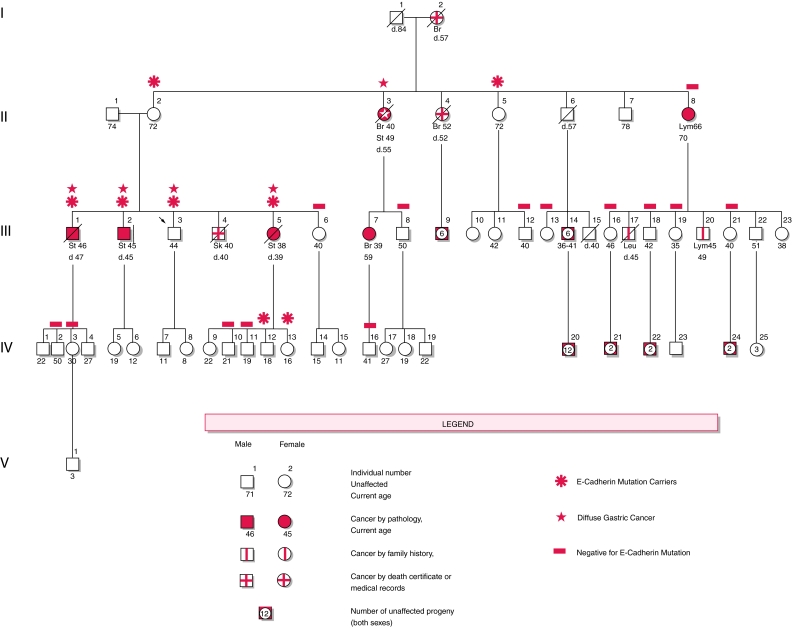As we now know, hereditary diffuse gastric cancer is a rare inherited syndrome that is caused by a genetic mutation in the CDH1 gene. This gene has the possibility of being passed from generation to generation, and the effects of the inheritance can be devastating. Looking beyond HDGC, we notice that the new wave of medicine is focused on genetic mapping, counseling, and testing – searching for patterns of heart disease, autism, dementia, and all types of cancer, to name a few.
Oftentimes, primary care physicians simply don’t have the time to ascertain and document a thorough family history during a brief appointment. They are often allotted only 15-minute intervals to discuss your own medical history, review your medication list, talk about any current issues or concerns, perform a physical exam, develop a management plan, prescribe any new medications, and update your medical record (whew!). The time spent on family history is minimal, and sometimes even missed altogether.

Therefore, it is crucial for you to keep records of your family history to bring with you to medical appointments. Make a list of your immediate family members, including grandparents, parents, aunts and uncles, cousins, and siblings. Include any pertinent family history, such as heart disease, diabetes, high blood pressure, or cancer diagnoses. Consider drawing a family tree or creating a computer spreadsheet that includes gender, medical problems, and dates and ages of each diagnosis or death. If you feel inclined, make copies of your work to give to your children or other relatives who could benefit from it as well.
Especially important in HDGC families, is keeping track of who has had genetic testing, who tested positive for a CDH1 gene mutation, and who has had a diagnosis of either lobular breast cancer or diffuse gastric cancer. For your family members who have a genetic diagnosis, ask them about their screening appointments and biopsy results. Know which of your family members had prophylactic or curative gastrectomies, and what their pathology results were.
If creating your own family tree seems like a daunting task, look to the internet for some great resources that can aid you and your family members in beginning the project. The US Department of Health & Human Services has an interactive website that allows you to enter health data about all family members, and automatically uses the information to create a family tree diagram that can be printed and carried with you. You can even share your work with family members through the website. Visit My Family Health Portrait to get started.
Once you have collected information on your family history, bring it with you to review at your next medical appointment. If there is something you think your medical provider is missing, bring it to his or her attention politely; for example, “My maternal aunt was recently diagnosed with breast cancer at the age of 42. My grandmother also had breast cancer when she was alive. Is this something that I should be worried about?” Alternatively, just by showing your provider a copy of your family tree, he or she may be able to pick up something that you may have missed; for example, a family history of one type of cancer may put you at risk for a different type of cancer altogether.
Sometimes, learning about your family history and bringing it to the attention of your doctor will reveal an important piece of the puzzle that can allow him or her to provide you with the best comprehensive care possible. So start talking and get to know your family history!
By Johanna Chelcun, MHS, PA-C